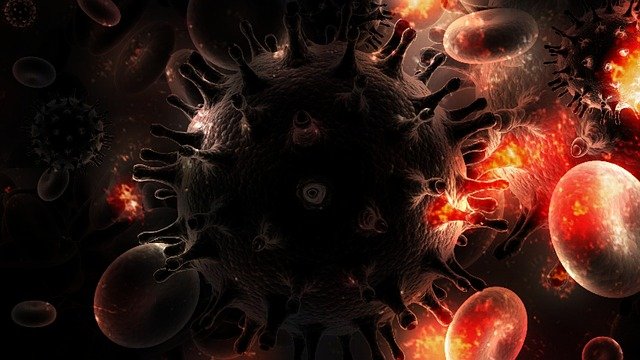Are viruses good or bad? Should we really visit one? Well, given the present times, the instant answer would be: viruses are bad and there is definitely no need to visit them. There is a reason why we are urgently following social distancing. The evidence? SARS-CoV-2, of course! We all know that this virus causes the novel coronavirus disease, wreaking havoc across the world since the end of 2019. It has turned our lives upside down because of its rapid infection spree. Not only COVID-19, but viruses also cause illnesses like Ebola, smallpox, influenza, SARS, MERS, and dengue.
But, did you know that if it was not for some viruses, there would be no humans? They probably played a crucial role in human evolution. For the last few years, scientists around the world have been exploring these agents of change to unravel several mysteries associated with them.
A Debatable Origin
Virologists do not have a single answer to the question of the origin of viruses. There are three possibilities. According to the escape or progressive hypothesis, viruses originated from genetic material that “escaped” from cells. The reduction or regressive hypothesis states that viruses evolved from organisms that lost genetic material over time, keeping only genes required for parasitism. Both these hypotheses consider the existence of viruses after cells. Could viruses have evolved together with cells? Could they have originated before? The co-evolution or virus-first hypothesis talks about this possibility. However, to date, there has been no clear explanation about where did viruses come from.
A Puzzling Existence
Viruses are strange. Outside a living cell, they are not alive. But, they start reproduction the moment they enter a living cell. They synthesize new copies of themselves and exit the cell to infect other cells. They are obligate parasites, which cannot complete their life cycle without exploiting a suitable host.
A virus can get inside a living cell if its outer coat and the cell surface of the host are compatible with one another. It is similar to the lock-and-key mechanism. This is what makes the viruses species-specific. Some viruses are further restricted to limited cell types within the host because of the same reason. Since viruses reproduce without growth, it gets difficult to classify their existence as living or non-living. This exception makes them unique!
Their Association with “Jumping” Genes
Researchers say that the number of viruses on our planet is more than the number of stars in the universe. These entities have diverse and interesting features. Some viruses leave “footprints” in the genetic material of the host they infect. Once inside the living cells, their genetic material gets integrated into that of the host. Some of these segments can jump from one location to another within the host genetic material. These are known as retrotransposons. According to estimates, around 50% of the human genome is made up of such elements.
Several viruses found their way into our genetic material in this manner over a span of thousands of years. They eventually got modified into inert entities during the course of evolution. The ones that became a part of our germline are passed from one generation to the next. The ability to rapidly make copies of themselves (replication) and alter their genetic material (mutation) makes viruses a leading source of genetic innovation.
Not Always Bad
The struggle against an infectious disease can be a crucial evolutionary process. It can be advantageous or disadvantageous to a species in competition with others. Sometimes, viruses can be said to trigger the “survival of the fittest” concept by Charles Darwin, selecting organisms with genes better suited for the present environment. In the case of the novel coronavirus, this selection would depend on the patient’s immune response.
We know that viruses need to fuse with the host cell to get inside it. Sometimes, this may cause viruses to end up fusing cells together. It can give rise to duplications as well as mosaic and hybrid genetic materials. This can potentially cause previously working genes to become functionless or the creation of genes with novel functions. Such processes over the course of evolution have made us what we are today!
Did you know that the envelope coat protein of the virus continues to be synthesized even if the rest of it becomes harmless? This envelope can block the surface proteins (receptors) on host cells that a new virus can use to force its entry and infect us. This is how some virus infections can give rise to superinfection immunity.
A new virus (Colneyvirus), recently discovered near Norwich in England, can potentially treat Clostridium difficile infections. It is a bacteria that infects the bowels during antibiotic administration, causing diarrhea and fever. Another recent study highlighted the discovery of 28 new viruses that are about 15,000 years old. They were found in ice samples from western China. According to the scientists, they are believed to not adversely affect humans and can help to better understand the relationship between climate change and virus evolution. However, melting glaciers can lead to releasing viruses that might be infectious to us.
Many viruses play critical roles in sustaining ecosystems. Several others are responsible for maintaining the health of organisms. Ancient viruses contributed to the human ability to give birth to alive babies. Whether good, bad, or ugly, viruses affect all life on our planet. However, a lot still remains to be unknown about these drivers of evolution! We need to visit viruses to understand life and develop our defenses against potential future health emergencies caused by them.
References
- Wessner, D. R. (2010). The Origins of Viruses. Nature Education, 3(9):37.
- https://microbiologysociety.org//are-viruses-alive.
- https://www.cshl.edu/the-non-human-living-inside-of-you/.
- Van Blerkom L. M. (2003). Role of viruses in human evolution. American journal of physical anthropology, Suppl 37(Suppl), 14–46.
- https://www.bbc.com/news/Colneyvirus/uk-england-norfolk.
- https://www.independent.co.uk/28-prehistoric-viruses-unknown-to-science-found.
